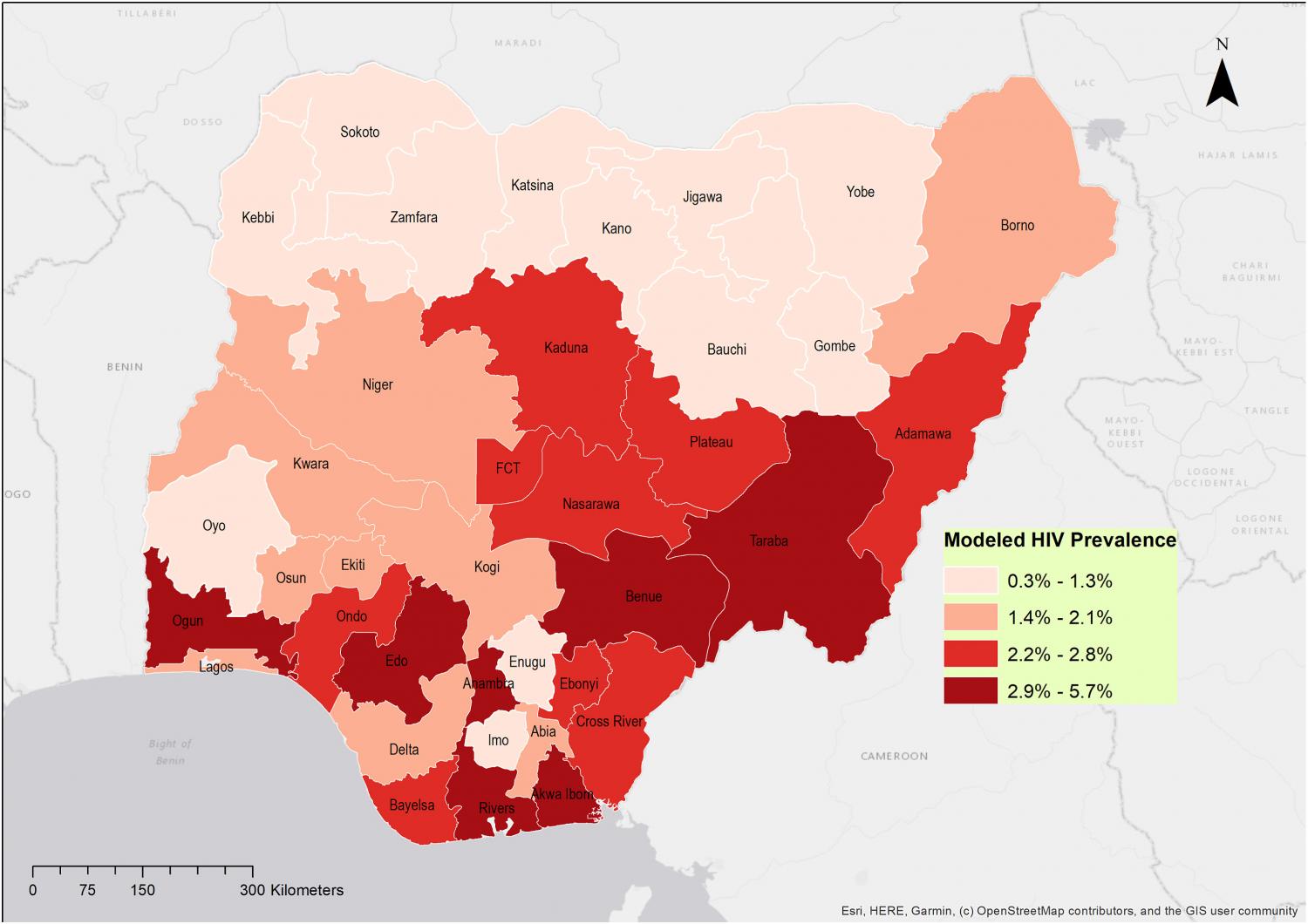
Background: The cost of population-based surveys is high and obtaining funding for a national population-based survey may take several years, with follow-up surveys taking up to five years. Survey-based prevalence estimates are prone to bias owing to survey non-participation, as not all individuals eligible to participate in a survey may be reached, and some of those who are contacted do not consent to HIV testing. This study describes how Bayesian statistical modeling may be used to estimate HIV prevalence at the state level in a reliable and timely manner. Methods: We analysed national HIV testing services (HTS) data for Nigeria from October 1, 2020, to September 30, 2021, to derive state-level HIV seropositivity rates. We used a Bayesian linear model with normal prior distribution and Markov Chain Monte Carlo approach to estimate HIV state-level prevalence for the 36 states +1 FCT in Nigeria. Our outcome variable was the HIV seropositivity rates and we adjusted for demographic, economic, biological, and societal covariates collected from the 2018 Nigeria HIV/AIDS Indicator and Impact Survey (NAIIS), 2018 Nigeria Demographic and Health Survey (NDHS) and 2016-17 Multiple Indicator Cluster Surveys (MICS). The estimated population of 15–49 years olds in each state was multiplied by estimates from the estimated prevalence to generate state-level HIV burden. Findings: Our estimated national HIV prevalence was 2.1% (95% CI: 1.5–2.7%) among adults aged 15–49 years in Nigeria, which corresponds to approximately 2 million people living with HIV, compared to previous national HIV prevalence estimates of 1.4% from the 2018 NAIIS and UNAIDS estimation and projection package PLHIV estimation of 1.8 million in 2022. Our modelled HIV prevalence in Nigeria varies by state, with Benue (5.7%, 95% CI: 5.0–6.3) having the highest prevalence, followed by Rivers (5.2%, 95% CI: 4.6–5.8%), Akwa Ibom (3.5%, 95% CI: 2.9–4.1%), Edo (3.4%, 95% CI: 2.9–4.0%) and Taraba (3.0%, 95% CI: 2.6–3.7%) placing fourth and fifth, respectively. Jigawa had the lowest HIV prevalence (0.3%), which was consistent with prior estimates. Interpretation: This model provides a comprehensive and flexible use of evidence to estimate state-level HIV seroprevalence for Nigeria using program data and adjusting for explanatory variables. Thus, investment in program data for HIV surveillance will provide reliable estimates for HIV sub-national monitoring and improve planning and interventions for epidemiologic control. Funding: This article was made possible by the support of the American people through the United States Agency for International Development (USAID) under the U.S. President's Emergency Plan for AIDS Relief (PEPFAR).
